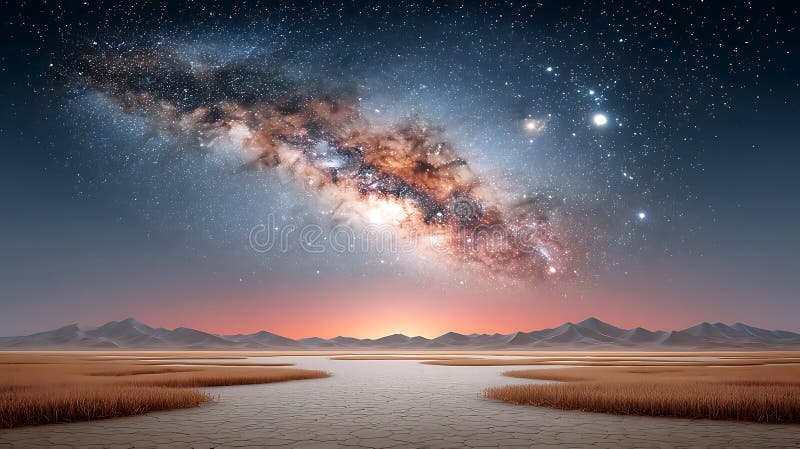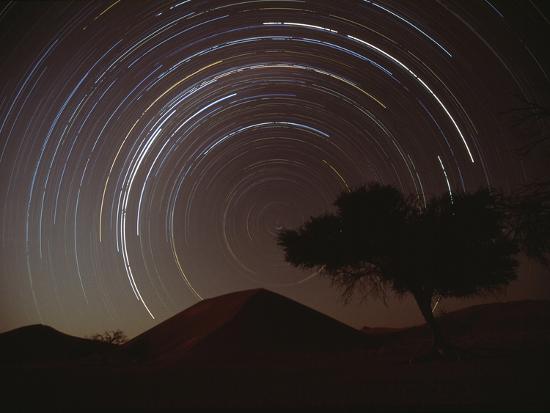Cosmic Deserts: A Guide to Astrotourism Hotspots for vistalocation.com

Embark on an extraordinary journey to the world's most breathtaking desert landscapes, where the celestial canvas unveils its most spectacular displays. This guide explores three exceptional desert locations renowned for their unparalleled astrotourism potential, offering unforgettable experiences under the darkest skies. Whether you are an amateur astronomer, an avid astrophotographer, a curious science enthusiast, or simply a traveler with a thirst for the awe-inspiring, these destinations promise memories that will last a lifetime. Get ready to explore the universe from some of the most unique places on Earth!
Location 1: The Atacama Desert, Chile – Stargazing Capital of the World
The Atacama Desert in Chile is arguably the best place on Earth to experience the wonders of the night sky. Its high altitude, extremely arid climate, and minimal light pollution combine to create some of the clearest and darkest skies imaginable. This remarkable combination makes it a premier destination for astrotourism, attracting stargazers and researchers from around the globe.
Astrotourism Activities
The Atacama Desert offers a wealth of activities for those seeking to explore the cosmos.
ALMA Observatory Visit: A guided tour of the Atacama Large Millimeter/submillimeter Array (ALMA) is an absolute must. As one of the world's most advanced astronomical observatories, ALMA provides a fascinating glimpse into the cutting-edge of astronomical research. Witness firsthand how scientists are unraveling the mysteries of the universe using state-of-the-art technology. Reservations are typically required, so book in advance.
Stargazing Tours: Join professional astronomers for guided stargazing tours using high-powered telescopes. These experts will guide you through the constellations, planets, and deep-sky objects, sharing their knowledge and passion for the cosmos. You'll learn about the mythology behind the constellations and the scientific significance of the celestial objects you observe.
Astrophotography Workshops: For those looking to capture the beauty of the night sky, participating in astrophotography workshops is a fantastic option. These workshops teach you how to capture stunning images of the Milky Way and other celestial wonders. The focus often includes capturing the Milky Way arching majestically over the rugged Atacama landscape, using long exposure techniques to reveal faint details and vibrant colors.
Celestial Events
The Atacama Desert offers unique opportunities to witness breathtaking celestial events.
The Southern Hemisphere's Milky Way: The dry season (April to September) is the best time to witness the Southern Hemisphere's dazzling display of the Milky Way. Its brilliance is amplified by the dark skies, creating an unforgettable spectacle.
Zodiacal Light: Keep an eye out for the Zodiacal Light, a faint glow caused by sunlight scattering off dust particles in the Solar System. It's best seen before dawn or after dusk and adds an ethereal touch to the already stunning night sky.
Specific Recommendations
For an optimal experience, stay in accommodations near San Pedro de Atacama, which offer stargazing packages. These packages often include guided tours, telescope access, and comfortable lodging, making your astrotourism adventure seamless and enjoyable.
Visual Details
When capturing the otherworldly beauty of the Atacama night sky, consider these image suggestions: wide-angle shots of the ALMA antennas silhouetted against the Milky Way; close-up views of nebulae and star clusters taken through telescopes; and time-lapses showing the movement of the stars across the desert landscape. Emphasize deep blacks in the sky, contrasted with the vibrant colors of the Milky Way. Use a cool color palette to emphasize the arid, remote feel.
Technical Quality Specifications
Images should be high-resolution (minimum 4000 x 3000 pixels) with minimal noise and professionally retouched to ensure clarity and detail.
Composition and Style
Focus on creating a sense of awe and wonder, emphasizing the vastness of the cosmos. Use leading lines in the landscape to draw the viewer's eye towards the night sky, creating a visually compelling composition.
Location 2: The Namib Desert, Namibia – Where Dunes Meet the Stars
The Namib Desert in Namibia presents a landscape of towering sand dunes stretching as far as the eye can see. This vast, open expanse offers an unparalleled sense of isolation and darkness, making it a truly special destination for stargazing. The stark beauty of the desert landscape combined with the pristine night sky creates a surreal and unforgettable experience.

Astrotourism Activities
The Namib Desert offers unique astrotourism activities that take full advantage of its dark skies and dramatic landscapes.
Desert Stargazing Safaris: Embark on guided night drives to remote locations for unparalleled views of the night sky. These safaris often include expert guides who can point out constellations, planets, and other celestial wonders. The vastness of the desert amplifies the sense of awe and wonder as you gaze upon the cosmos.
Astrophotography Opportunities: The dramatic landscapes of the Namib Desert provide incredible astrophotography opportunities. Focus on capturing the towering sand dunes beneath the stars, creating striking compositions that blend earthly and celestial beauty.
Lodges with Observatories: Enhance your experience by staying at lodges equipped with telescopes and professional astronomers. These lodges offer a comfortable and convenient way to explore the night sky, with expert guidance and top-of-the-line equipment.
Celestial Events
The Namib Desert provides excellent opportunities to observe unique celestial events.
Eta Aquariids Meteor Shower: Observe the Eta Aquariids meteor shower in May, best seen from the Southern Hemisphere. The dark skies of the Namib Desert provide an ideal viewing location for this spectacular display of shooting stars.
Magellanic Clouds: Look for deep-sky objects like the Magellanic Clouds, visible to the naked eye. These dwarf galaxies are satellite galaxies of the Milky Way and appear as faint, hazy patches in the night sky.
Specific Recommendations
Book accommodations in the NamibRand Nature Reserve, an International Dark Sky Reserve. This designation ensures minimal light pollution and pristine night skies, making it an ideal location for astrotourism.
Visual Details
Capture the surreal beauty of the Namib Desert at night. Consider time-lapse images of star trails swirling above the sand dunes, panoramic views of the Milky Way reflected in the salt pans, and photographs of desert wildlife silhouetted against the starlit sky. Use warm lighting to highlight the textures of the sand dunes and showcase the contrast between the earthly and the celestial.
Technical Quality Specifications
Aim for long exposures to capture faint details in the night sky. Use noise reduction techniques to minimize graininess and ensure tack-sharp focus throughout the image.
Composition and Style
Strive for a sense of scale, emphasizing the smallness of humanity in the face of the vast cosmos. Use strong, graphic compositions to highlight the shapes of the dunes and the patterns of the stars.
Location 3: The Mojave Desert, USA – A Night Sky Oasis
Spanning parts of California, Nevada, Utah, and Arizona, the Mojave Desert offers easily accessible dark sky locations away from major urban centers. It's a convenient and rewarding destination for those seeking a cosmic escape within the United States.

Astrotourism Activities
The Mojave Desert offers a variety of astrotourism activities catering to different interests and skill levels.
McDonald Observatory Star Parties (nearby in Texas): Although not directly in the Mojave, attending public star parties at the McDonald Observatory in nearby Texas is a fantastic option. These events offer educational programs and telescope viewing opportunities, making it a great experience for both beginners and experienced stargazers.
Joshua Tree National Park Stargazing: Explore Joshua Tree National Park, a designated Dark Sky Park, and observe constellations and planets. The park's unique landscape provides a stunning backdrop for stargazing, with iconic Joshua trees silhouetted against the night sky.
Astrophotography Retreats: Join astrophotography retreats focusing on capturing the unique desert landscapes. These retreats provide hands-on instruction and guidance, helping you to improve your astrophotography skills and capture breathtaking images.
Celestial Events
The Mojave Desert offers opportunities to witness impressive celestial events throughout the year.
Perseids Meteor Shower: View the Perseids meteor shower in August, a spectacular display of shooting stars. Find a dark spot away from any light pollution and enjoy the show!
Planetary Alignments: Capture planetary alignments for stunning astrophotography opportunities. These events occur when several planets appear close together in the sky, creating a visually striking sight.
Specific Recommendations
Visit the Amboy Crater and explore the surrounding dark sky regions for particularly dark and clear skies.
Visual Details
Emphasize the unique features of the Mojave Desert landscape in your astrophotography. Capture images of Joshua trees silhouetted against the night sky, wide-angle views of the Milky Way stretching across the desert horizon, and close-ups of desert flowers under the moonlight. Experiment with different lighting techniques to bring out the textures and colors of the desert.
Technical Quality Specifications
Pay close attention to white balance to ensure accurate color rendition. Use focus stacking techniques to achieve sharpness throughout the image, and correct for any distortion caused by wide-angle lenses.
Composition and Style
Focus on creating a sense of serenity and tranquility. Use soft, diffused lighting to evoke a sense of peace and calm. Emphasize the natural beauty of the desert landscape.
Light Pollution and Responsible Stargazing
Preserving dark skies is crucial for astrotourism and the environment. Minimize light pollution by using red-light flashlights and headlamps, avoiding unnecessary outdoor lighting, and supporting local dark sky initiatives. Promote responsible camping and hiking practices to protect the fragile desert environment. Remember to pack out everything you pack in and stay on designated trails.
SEO Keywords
Astrotourism, desert stargazing, Atacama Desert, Namib Desert, Mojave Desert, stargazing tours, astrophotography, ALMA Observatory, McDonald Observatory, dark sky tourism, night sky photography, light pollution, best places for astrotourism, dark sky destinations, astro-photography workshops, desert camping stargazing.
Call to Action
Plan your unforgettable astrotourism adventure today! Book your accommodations, tours, and astrophotography workshops through vistalocation.com and experience the magic of the cosmos in the world's most stunning desert landscapes. Don't miss the opportunity to witness the universe in all its glory!